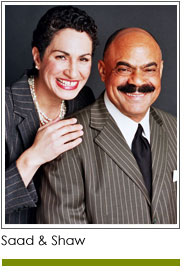 What is the true cost for you to make the needle move? Are you trying to accomplish more than what you are able to accomplish within the resources you have?
What is the true cost for you to make the needle move? Are you trying to accomplish more than what you are able to accomplish within the resources you have?
Life moves fast, and the past two years have moved crazy fast. Especially for nonprofits. Some have become so agile and responsive, focusing on community needs related to housing, food, education, health, immigration, and more. Others, for example arts organizations, have had to pivot or reorganize, while others have paused or ceased operations. Life has been full of change, and nonprofits have been adapting. Here’s the question: how has adapting affected your organization’s ability to deliver on its mission and vision. Specifically, how has your “anticipated impact” been impacted?
In business, people talk about “making the needle move.” They set goals related to revenue, distribution, manufacturing, and other aspects of their operation. They work of reaching those goals is referred to as “making the needle move.” For nonprofits, the question is the same, though the impact – and how we measure it – is different. And the past two years have turned all expectations on their head. In the past you may have anticipated an increase in reading scores of 17%. Well, changes in how schools operate have surely changed that outcome. But what do you communicate to your community, donors, families, and funders? We believe you need to talk about the work you have been able to accomplish, how you have adapted, and what your plans are moving forward. It is not about making excuses: it's about being transparent.
In the spirit of transparency, we also encourage our readers to think about the following statement: “We need more money; if we had more money we could fulfill our vision and goals.” Ask yourself the following questions: “Is this true?” “How much more could we accomplish with additional funding?” And, “how much more additional funding would it take to fully realize our goals?” Here’s a specific example: can you reduce poverty by 20% with funding of $950,000? We believe that if you could that would be amazing. But poverty reduction is an enormous challenge. Are you actually trying to reduce poverty for 20% of the people you serve? Then the question becomes are you serving 100 families or 1,000? And can you provide the same quality of service as you serve more families? Will you have more “indirect costs” associated with such an increase in services?
We ask these questions because we see nonprofits set high goals that are expensive to reach. Part of that expense relates to building capacity, infrastructure, systems, and more. These expenses need to be calculated into your anticipated growth and impact. Sometimes you need to ask donors and funders to invest in your vision and goals prior to seeing the needle move. You need to know the true cost of making the needle move. Don’t promise to accomplish more than you are capable of and remember to ask for what you need. You’re worth it.
Copyright 2022
Mel and Pearl Shaw of Saad&Shaw – Comprehensive Fund Development Services. Video and phone conferencing services always available. Let us help you grow your fundraising. Call us at (901) 522-8727. www.saadandshaw.com.
















